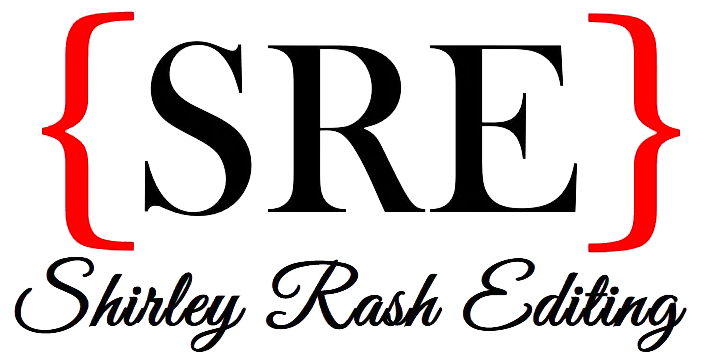When I worked as a writing tutor in a college writing center, we made a distinction between what we called higher-order concerns and lower-order concerns in the student papers we saw. Higher-order concerns were all the fundamental non-sentence-level issues we identified.
They were the big-picture aspects of the paper—everything from weak/incoherent arguments to meandering organization. Sometimes, the paper simply did not fulfil the intended purpose of the assignment. At the writing center, we prioritized evaluating these aspects of the papers.
Invariably, however, students were most focused on lower-order concerns—grammar, spelling, punctuation, formatting, etc.—when they came in to see us. Part of our job was, with the student’s permission, drawing their attention to the higher-order concerns because a paper could be competently written, even well written, from a prose standpoint and still have significant problems. Many students were appreciative of the feedback, even though it wasn’t what they’d ever considered as a potential problem.
As an editor, I’ve found that my author clients tend to seek out feedback on higher-order concerns much more proactively than the students I tutored. However, it can still be a confusing process to navigate. This post talks about two of the most common ways that editors look at higher-order concerns in manuscripts—developmental editing and manuscript critiques.
How can an editor help me with higher-order concerns in my manuscript?
For nonfiction manuscripts, a lot of the same issues I looked at in undergraduate papers are just as applicable—organization, argument, purpose. Is the manuscript organized in a clear, coherent manner? Does the manuscript have a strong introduction and conclusion? Is the argument being made logical, well-developed, and well-supported? For historical nonfiction, effective use of sources can be a significant concern.
In fiction manuscripts, the focus is usually instead on the elements of fiction. Does the plot develop in a cohesive, coherent way? Is the narrative structure effective? Are the main characters well-rounded? Are the intended themes coming through effectively?
As much as I enjoy the editing that goes into lower-order concerns, this form of editing is one of my absolute favorites. It’s wonderful to work with authors as they flesh out these essential building blocks for their manuscripts.
I provide two forms of this type of editing—developmental editing and manuscript critiques. It’s pretty common for professional editors to offer these services, and everyone’s specific requirements differ a little. But a manuscript critique is going to have less feedback than a developmental edit and almost invariably be cheaper too.
For my clients, feedback on higher-order concerns always involves an extensive editorial letter, broken into categories, and ending with a tailored list of major recommendations and, if necessary, recommended resources. (Because I’ve watched too much Columbo, I usually refer to this editorial letter in my head as “The Summation.”) Developmental editing clients also receive in-text comments that further elaborate on the points I make in the editorial letter, whereas manuscript critique clients only get the letter.
Is one service better than another?
No. Whether a developmental edit or a manuscript critique is a better fit really depends on the client and the manuscript. I’ve had several clients be very happy with a manuscript critique when they were interested in getting feedback on higher-order concerns but not able to afford a full developmental edit, especially when anticipating the need for further editing rounds as part of their budget. I’ve had other clients much prefer the developmental edit, even though it is pricier.
If price is not a concern, my main suggestion would be to consider the factor of comments in text. Developmental editing is an extremely comprehensive way to connect the more general feedback on overall trends in the book to specific moments in the manuscript. For some writers, it’s invaluable to have the feedback from the editorial letter pinpointed throughout the manuscript. For others, it may seem overwhelming or even redundant to have additional comments underscoring what is in the editorial letter.
There’s no right or wrong answer, and it’s something that I like to talk to potential clients about early in the onboarding process.
Can you do developmental editing in bits and pieces?
I have done developmental editing in chunks—it can be very helpful and motivating for writers who have a work in progress that they want feedback on to receive developmental editing over a section of chapters at a time. The main thing I recommend to these clients is that there still needs to be a final round of developmental editing once all the pieces are in place to ensure that the individual chapters all add up coherently.
As I’ve discussed, this form of editing is all about the big picture, and for that to work, you have to truly be able to see the big picture. The idea of the big picture is something I keep in mind as I work on smaller chunks, but ultimately, you need a complete draft to work from for that to happen. In this case, a follow-up manuscript critique can be a good option to ensure nothing has been missed. Depending on the extent of revisions, I sometimes also incorporate a check of the developmental editing changes with a copyedit, though this works better if the author and I are both confident that the revisions have indeed addressed the significant issues in the manuscript.
Can you copyedit while you work on a developmental edit/manuscript critique?
No. This is something I feel very strongly about—out of personal experience. The revisions an author does after receiving feedback on higher-order concerns can be quite extensive. You may end up deleting entire chapters or adding new ones. Entire scenes may be extensively revised, to the point they no longer resemble the original.
It’s counterproductive to even attempt to tweak grammar, punctuation, spelling, etc., at this stage because, chances are, quite a few of the original errors will be removed in the rewrite and new errors will inevitably be introduced. Copyediting needs to happen after the content is set, when the focus has changed from revamping entire chapters/scenes/pages to sentence-level changes. You will save yourself and your editor a lot of frustration, time, and effort by doing copyediting in a separate round. I know this can add up to a lot of money, so I do provide discounts to clients who book me for both types of editing in separate rounds.
I’ve mentioned copyediting quite a bit in this post, but the next part of this series will delve far more in-depth into sentence-level editing, which also includes line editing as well as copyediting. I might end up writing an overview of the books I’ve read for fun this year first. Depends on how fast I can write before the end of the year!
Read the whole “What Is Editing” series:
- Intro
- Beta Reading
- Manuscript Critiques and Developmental Editing
- Line Editing and Copyediting
- Proofreading
- Citation Editing and Permissions Editing
- Author Coaching





